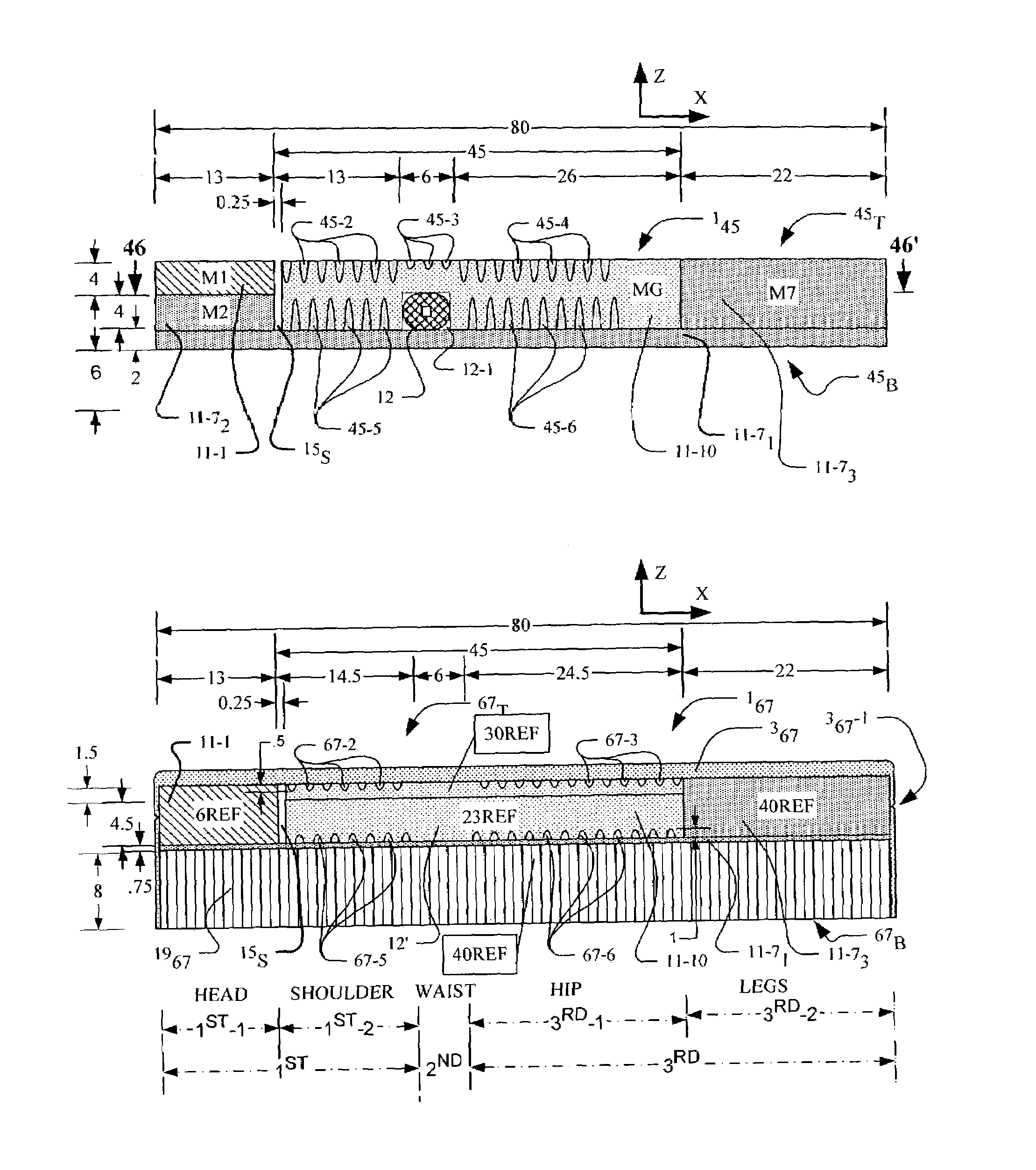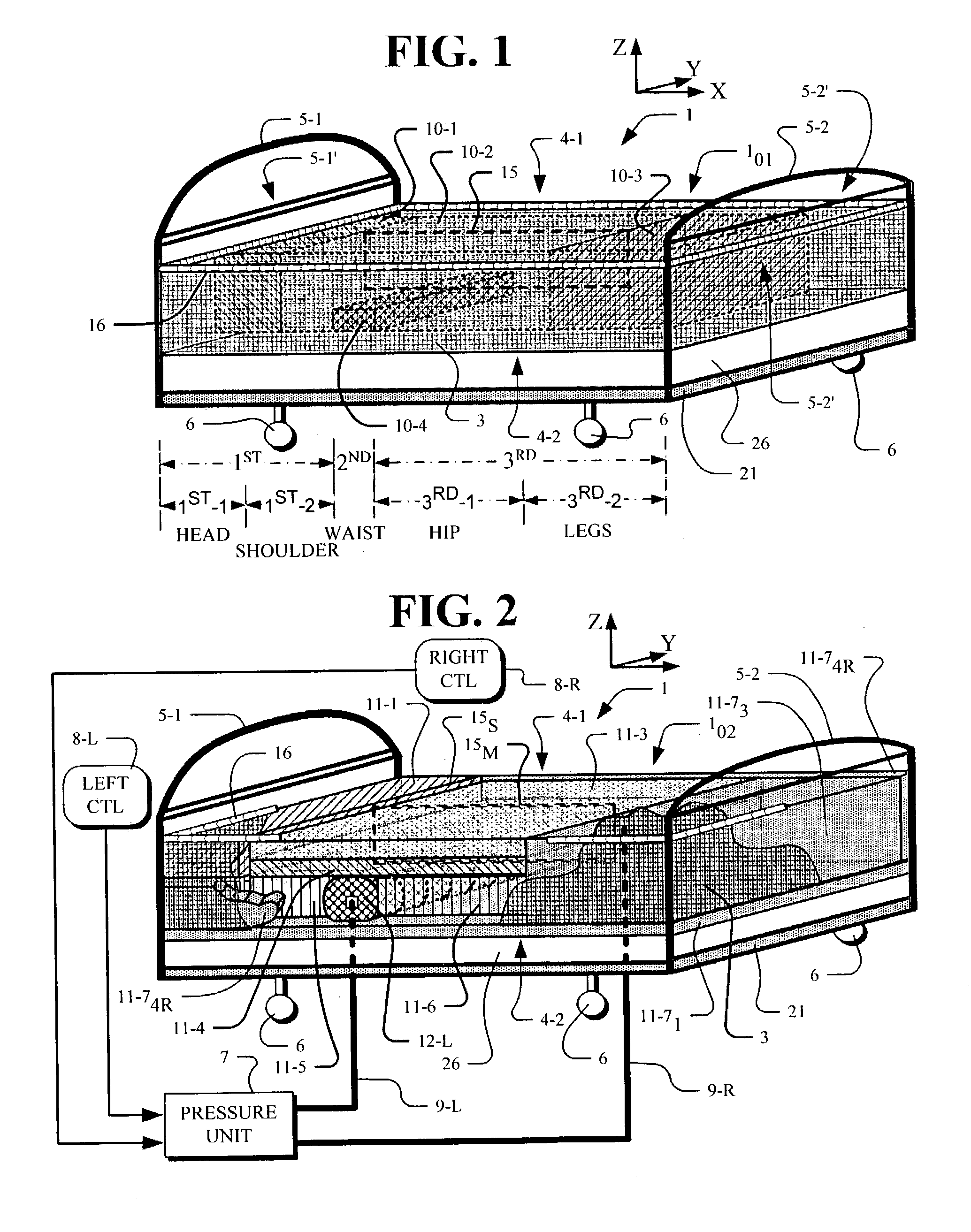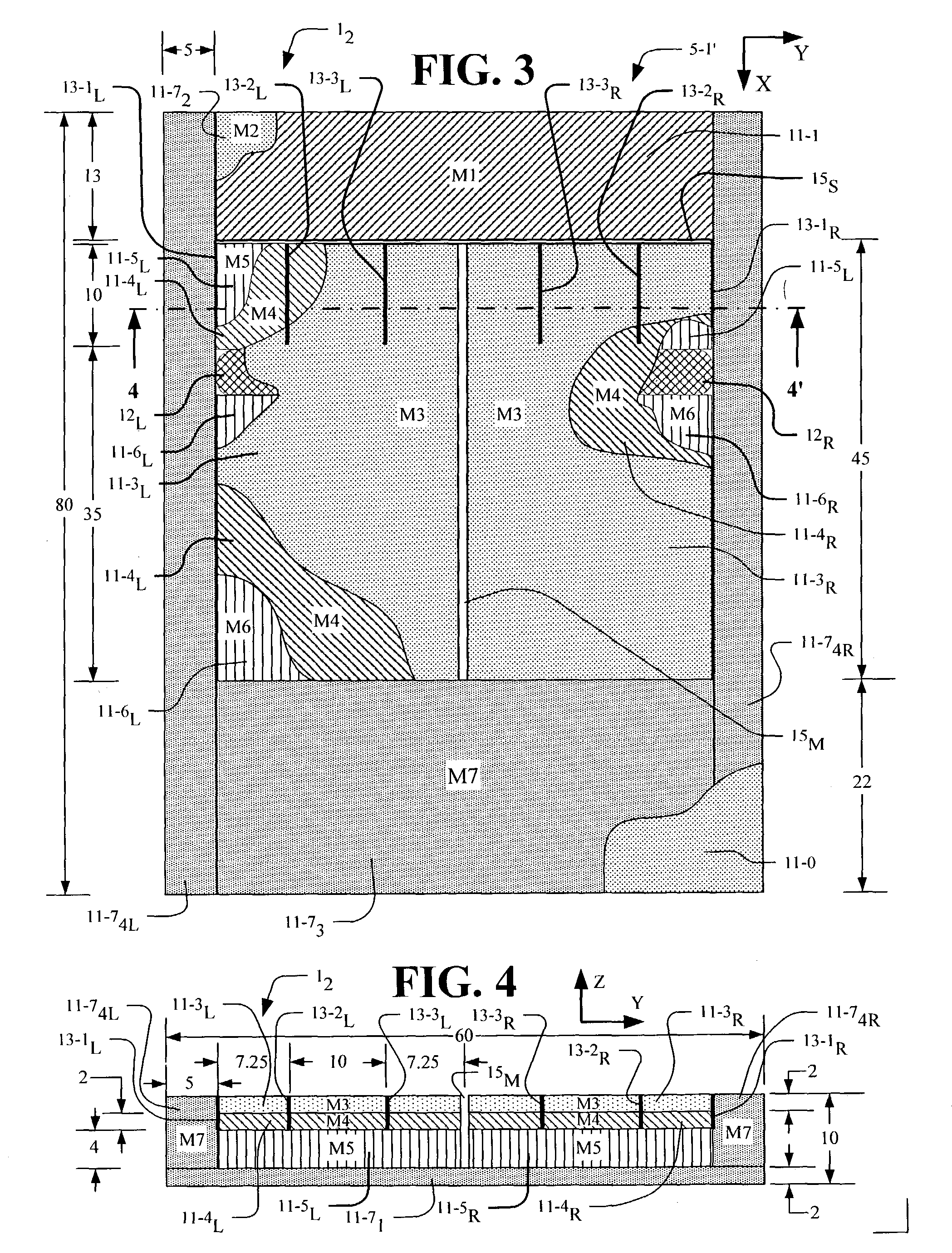Bed having low body pressure and alignment
a mattress and body technology, applied in the field of beds, can solve the problems of poor body alignment, poor sleep quality, poor body alignment, etc., and achieve the effect of low body pressure and low body pressur
- Summary
- Abstract
- Description
- Claims
- Application Information
AI Technical Summary
Problems solved by technology
Method used
Image
Examples
Embodiment Construction
[0109]FIG. 1 depicts an isometric view of a bed 1 having a mattress 101 which is capable of supporting a reclining body (not shown) where the reclining body is supported by low body pressure and where the reclining body is maintained in alignment. The terminology low body pressure means a pressure which is below a pressure threshold (typically the ischemic threshold) for comfortable sleep and of a level which materially reduces causes of bed-induced shifting. The terminology maintained in alignment means an alignment from head to foot of a body that avoids or reduces lateral bending of the vertebral column of the body, particularly for a person in a side-sleeping position, and that eliminates or reduces sagging of the body.
[0110]FIG. 1 depicts an isometric view of a bed 1 having a mattress 101 supported by a foundation 26 and a supporting frame 21. The foundation 26 is a box spring, firm box, board or other conventional mattress support. The supporting frame 21 may be any frame and ...
PUM
 Login to View More
Login to View More Abstract
Description
Claims
Application Information
 Login to View More
Login to View More - R&D
- Intellectual Property
- Life Sciences
- Materials
- Tech Scout
- Unparalleled Data Quality
- Higher Quality Content
- 60% Fewer Hallucinations
Browse by: Latest US Patents, China's latest patents, Technical Efficacy Thesaurus, Application Domain, Technology Topic, Popular Technical Reports.
© 2025 PatSnap. All rights reserved.Legal|Privacy policy|Modern Slavery Act Transparency Statement|Sitemap|About US| Contact US: help@patsnap.com



